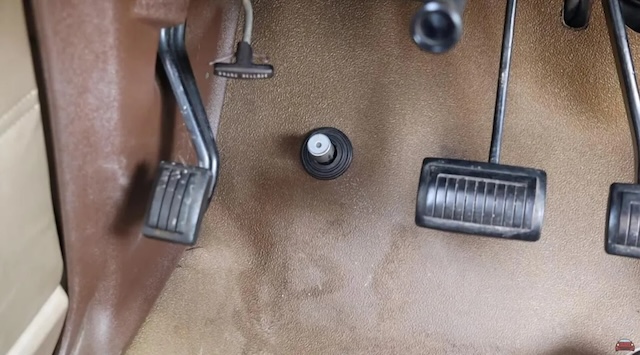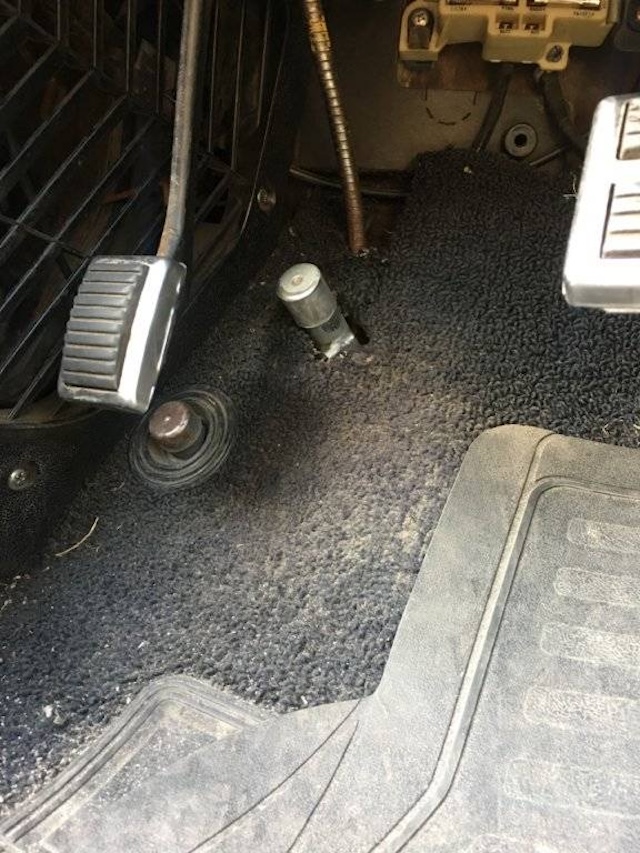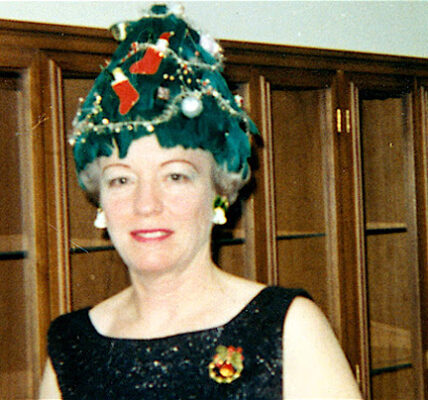Can You Recall What This Was For? If You Know, You’re Likely A Part Of A Bygone Era. But Do You Know The Interesting History Behind Its Widespread Use?
Can you picture that little button on the floor of classic cars? If you can, you’re probably transported back to a time when driving meant being fully engaged in the moment. That simple, often-overlooked switch was the secret to lighting up dark country roads, adding a touch of magic to every drive. It wasn’t just a car part—it was a piece of the adventure, a memory-maker from an era when the road and driver worked in harmony. Let’s step back in time and reveal the rich history and stories of this bygone feature
Introduction to the High-Beam Floor Switch
Remember that little button on the floor of old cars? If you do, you’ve probably spent many nights cruising down dark country roads or highways. That little button is known as the high-beam floor switch, and it was once a key component in nearly every vehicle. Before modern cars had steering column controls for lights, this switch played a crucial role in ensuring safe nighttime driving.
Long before cars became equipped with automatic headlight sensors and steering wheel controls, the high-beam floor switch was your left foot’s best friend, allowing you to flip between low and high beams with ease. It was an essential part of every car, giving drivers a sense of control and a small touch of adventure on those night drives.

The Golden Era of Driving
The 1950s through the 1980s were the golden years for the high-beam floor switch. Car designs were sleek, dashboards were minimalist, and technology was simple but functional. Back then, cars were made for the open road, and long-distance travel was more of an event than a routine. Driving at night meant relying on your headlights to navigate through poorly lit streets and highways.
The introduction of the high-beam floor switch was a game changer. Positioned conveniently on the floor, it allowed drivers to easily toggle between low and high beams without moving their hands from the wheel. This feature gave a sense of freedom and made nighttime driving feel a bit more interactive. With just a press of the foot, you could instantly illuminate the road ahead or return to a dimmer setting when oncoming traffic approached.
How the High-Beam Floor Switch Changed Nighttime Driving
In the era before automated headlights and adaptive lighting systems, managing the brightness of your car’s lights was a manual process. The high-beam floor switch offered a simple yet effective way to control your visibility on the road. Its design allowed for quick adjustments based on road conditions, such as flicking on the high beams for a dark, empty highway or switching back to low beams when another car approached.

It wasn’t just about practicality; it was about safety. The high-beam floor switch gave drivers a way to be more engaged with the road, fostering a sense of awareness and responsibility. At night, when visibility was limited, being able to change the headlight settings quickly was essential for preventing accidents. It added a layer of interaction that is often missing in today’s automated driving experiences.
The Ritual of Using the High-Beam Floor Switch
Imagine driving an old car on a quiet, moonlit road. The engine hums softly as you grip the wheel, eyes fixed on the path ahead. The night is dark, with only your headlights piercing through the shadows. As you approach a stretch of road with no streetlights, you instinctively press down with your left foot, activating the high-beam floor switch. Instantly, the road lights up, revealing every curve, tree, and sign. You feel in control, more connected with the car, and more aware of your surroundings.
Back then, using the high-beam floor switch was almost a dance. As oncoming traffic approached, you’d tap the button again, dipping your beams as a gesture of courtesy and safety. It became second nature for drivers—a subtle foot movement that added to the rhythm of the journey. This ritual was part of the driving experience, making it unique and, in many ways, more personal.

Interesting Stories and Events Involving the High-Beam Floor Switch
The high-beam floor switch holds a special place in many drivers’ memories. In the days when road trips were a common family adventure, this little button often became a topic of discussion. Kids in the backseat would curiously ask, “What’s that button for?” It was usually a rite of passage when they were finally allowed to take the wheel and learn how to use it themselves.
There were also some funny mishaps associated with this switch. Many drivers have stories of accidentally hitting the high-beam floor switch when stretching their legs, suddenly blinding other cars or lighting up an unsuspecting stretch of trees. It was all part of the charm of driving older cars—the small quirks that made each trip memorable.
Interestingly, the high-beam floor switch also played a part in automotive etiquette. During the heyday of this feature, it was customary for drivers to signal their intentions using their high beams. For example, a quick flash of the high beams could mean, “You can go ahead,” or “Watch out, there’s something up ahead.” This kind of communication fostered a unique camaraderie among drivers, something that feels somewhat lost in today’s world of highly automated cars.

The Legacy of the High-Beam Floor Switch Today
With the advent of modern steering column controls and automatic high-beam systems, the high-beam floor switch gradually became obsolete. However, its legacy lives on in the hearts of car enthusiasts and vintage vehicle owners. Many classic car collectors take pride in maintaining their vehicles with the original floor switch, appreciating the simplicity and nostalgia it brings.
For younger generations who never had the chance to use one, encountering this floor button in an old car can be a fascinating experience. It serves as a reminder of how driving used to be—a hands-on, fully engaged activity where the driver played an active role in every aspect of the journey.
Even though technology has moved forward, there’s still something undeniably charming about manually pressing that little button with your foot. It’s a small piece of history that speaks to an era when driving was more than just getting from point A to point B; it was an event, a shared experience on the open road.

Conclusion
The high-beam floor switch was more than just a button on the floor of a car. It represented an era of driving where skill, attention, and courtesy were key. It made nighttime driving safer, more interactive, and even a little bit fun. Today, as we sit in our modern cars with automatic everything, it’s easy to forget how important that little switch once was.
In a world where technology now does much of the thinking for us, the high-beam floor switch reminds us of a time when we had to be more connected to our cars and the road. So, next time you spot one of these switches in an old vehicle, take a moment to appreciate its history. It was frequently used in the past and truly was a must-have for every driver.




